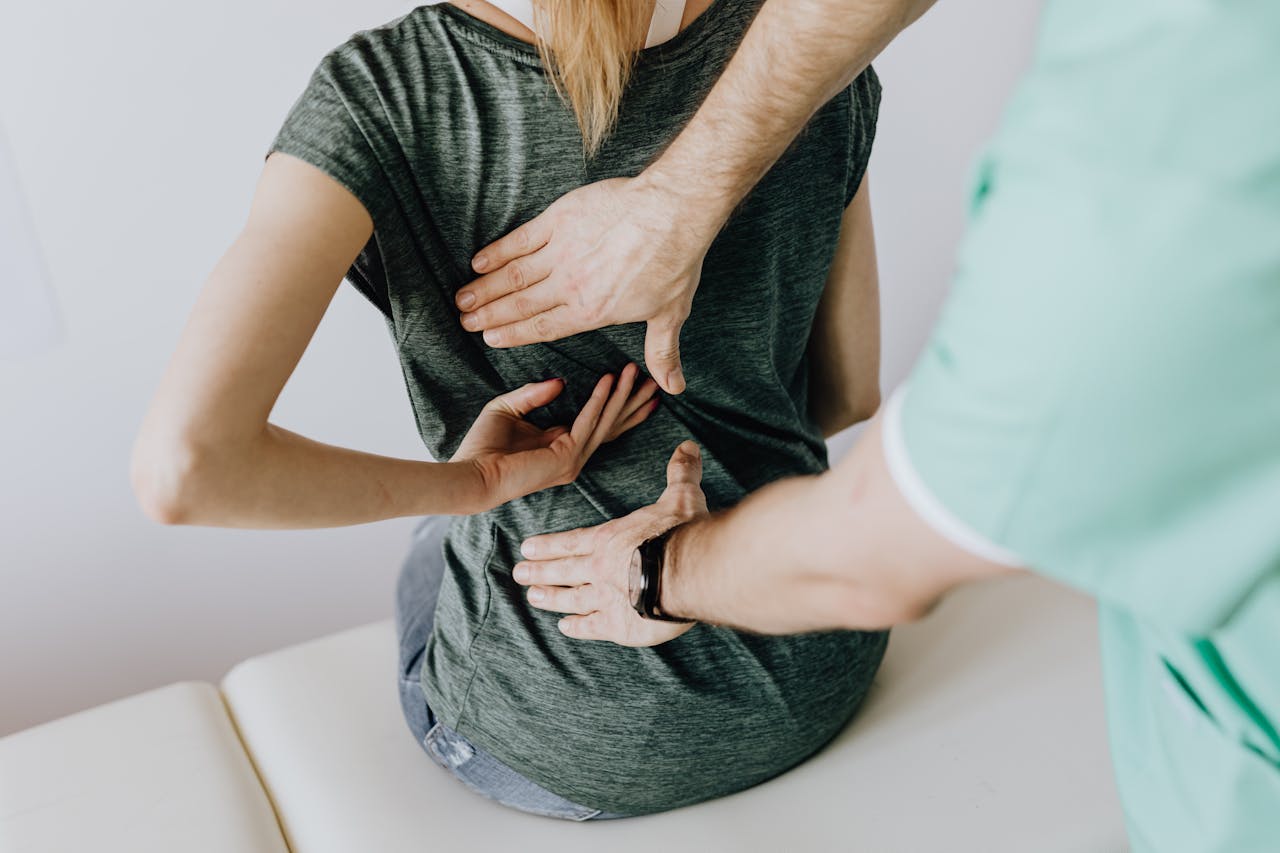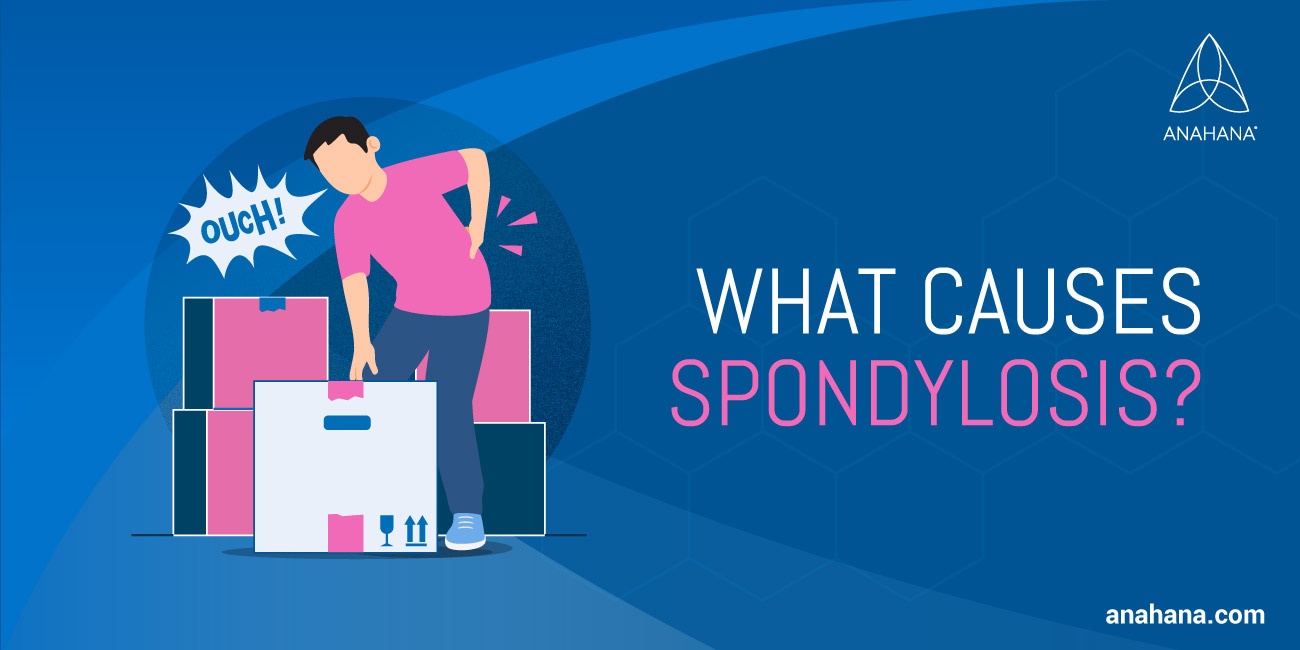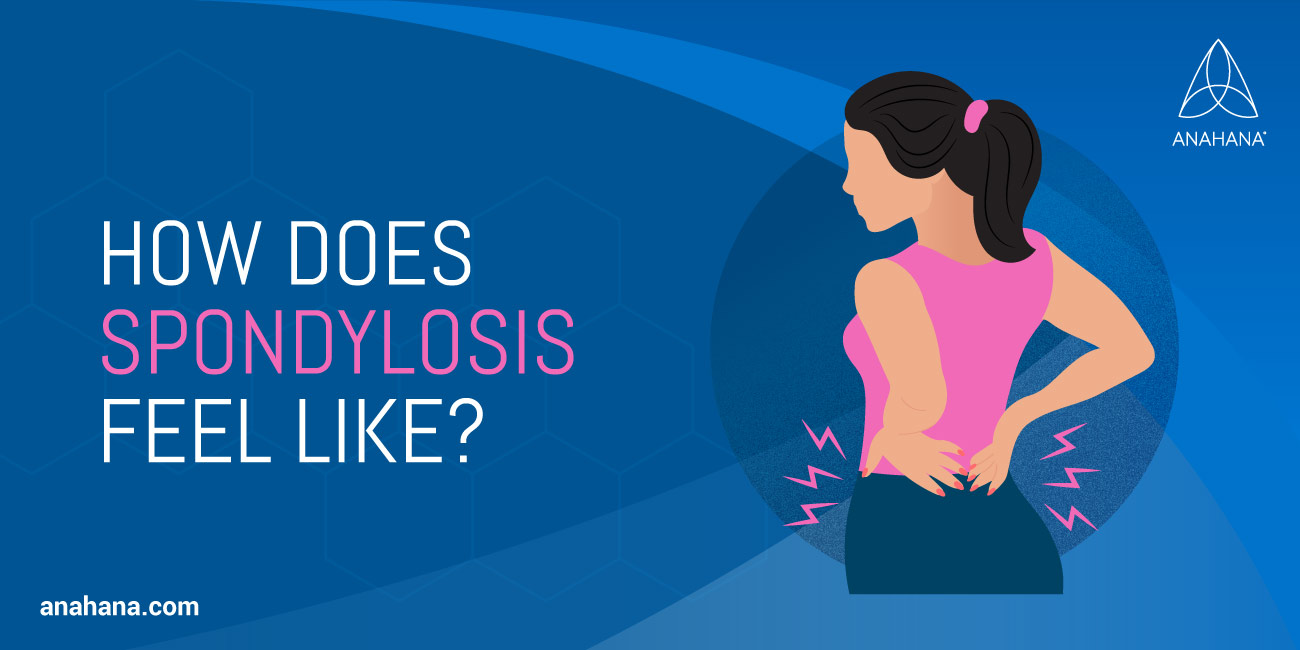
Table of Contents
Age-related degeneration of the spine that causes back and neck pain and stiffness.
Key Takeaways
- Definition: Spondylosis is age-related degeneration of the spine, causing back and neck pain, often linked to spinal osteoarthritis and degenerative disc disease.
- Symptoms: Include chronic pain, stiffness, cervical spondylosis symptoms, and in severe cases, nerve compression affecting the thoracic spine.
- Risk Factors: Family history, aging, smoking, obesity, and jobs requiring repetitive movement can increase the risk.
- Diagnosis: Diagnosed through physical exams, medical history, X-rays, magnetic resonance imaging (MRI), and CT scans.
- Treatments: Include home remedies, medications, physical therapy, and surgery for severe cases.
What is Spondylosis
Spondylosis describes the degeneration of the spine caused mainly by age-related wear and tear on the spine. Spondylosis degeneration is most common in the cervical spine, known as cervical spondylosis. When the degeneration is primarily in the lower spine, it is called lumbar spondylosis. As a person ages, changes occur to the spine, including, the spinal disks losing water, drying, and weakening.
These changes in the spinal disks cause them to bulge or collapse, decreasing the space between the vertebrae. Articular cartilage, which covers the facet joints of the spine, also wears away, which results in bone rubbing on the bone. This rubbing of bone on bone promotes the development of bone spurs, which put pressure on or irritate the spinal cord and spinal nerves.
Causes and Risk factors
 The most common cause of spondylosis is wear and tear on the spine, most commonly in older age. People with spondylosis often have wearing down of the articular cartilage that covers the joints of the spine called facet joints. The decreased articular cartilage is not only painful but can promote the development of bone spurs which can put pressure on the spinal cord or spinal nerves. There is also often decreased space between vertebrae due to collapsed, bulging or herniated discs. This narrowed space in the spinal canal results in spinal cord compression or pressure on the spinal nerve roots. This compression on the spinal cord or pinched nerves causes various symptoms, including nerve pain, tingling, or numbness in extremities and, in severe cases, loss of bladder or bowel control.
The most common cause of spondylosis is wear and tear on the spine, most commonly in older age. People with spondylosis often have wearing down of the articular cartilage that covers the joints of the spine called facet joints. The decreased articular cartilage is not only painful but can promote the development of bone spurs which can put pressure on the spinal cord or spinal nerves. There is also often decreased space between vertebrae due to collapsed, bulging or herniated discs. This narrowed space in the spinal canal results in spinal cord compression or pressure on the spinal nerve roots. This compression on the spinal cord or pinched nerves causes various symptoms, including nerve pain, tingling, or numbness in extremities and, in severe cases, loss of bladder or bowel control.
Although spondylosis is most often due to normal wear and tear on the spine, some factors may increase the risk of developing spondylosis. Some risk factors of spondylosis include; a family history of back and chronic neck pain, older age, smoking, obesity, previous neck or back injuries, and working in jobs that require repetitive movement.
How is spondylosis diagnosed?
Spondylosis is most often diagnosed through scans that allow a doctor to see spine images and determine if there are changes to the spinal cord or spinal discs. Scans may include X rays, an MRI or a CT scan. Nerve tests may also be done to see any changes to the nerve innervation of the muscles due to spondylosis. A doctor may also look at relevant symptoms and medical history to diagnose spondylosis.
Symptoms of spondylosis

The main symptom of Spondylosis is stiffness or pain in the spine or neck that worsens with long periods of inactivity. More severe symptoms include grinding or popping noises in the back or neck and muscle spasms. In some cases, people with spondylosis may experience more severe pain with sudden movements. Signs and symptoms that the spinal cord and spinal nerves may be affected include numbness or tingling in arms or hands, legs, and loss of bladder or bowel control.
Treatments for spondylosis
Spondylosis can be treated at home with home remedies such as heat and ice to decrease pain or stiffness. Cervical collars are often soft collar that help with neck pain due to cervical spondylosis. Over-the-counter or prescribed medications are primarily used to manage chronic neck or back pain associated with spondylosis.
People with spondylosis need to exercise regularly and maintain a healthy weight to help manage the condition’s progression and decrease symptoms such as pain and stiffness. Strengthening exercises help to support the back and spine, helping to reduce back pain. Yoga is an option for improving strength and flexibility and managing the symptoms of spondylosis.
Physical therapy for spondylosis helps work on core strength, flexibility, and range of motion. A physical therapist may use both active exercises or passive treatments, such as deep tissue massage, to help treat and manage the symptoms of spondylosis.
Some people with spondylosis may require surgery, especially if it’s causing nerve effects, such as numbness or tingling, loss of bowel or bladder function, or if there are risks for spinal instability. The most common surgery for spondylosis is spinal fusion, in which a spinal surgeon fuses vertebrae to decrease movement between the vertebrae.
Frequently Asked Questions
 Can spondylosis be cured?
Can spondylosis be cured?
-
Spondylosis can not be cured entirely, but treatments help to decrease symptoms and manage the condition to maintain a person’s quality of life.
Will I need surgery for spondylosis?
-
In some cases, spondylosis can be managed without surgical intervention. Surgery may be necessary if spondylosis is causing neurological effects such as weakness in arms or legs.
Does spondylosis run in families?
-
Research does show that spondylosis does have a genetic component. Therefore, a person may be more at risk for developing spondylosis if there is a family history of spondylosis.
Resources
Spondylosis: Causes, risk factors, and symptoms
https://www.spineuniverse.com/conditions/spondylosis
Spondylosis Diagnosis & Treatment - NYC | Columbia Neurosurgery in New York City
Cervical Spondylosis (Arthritis of the Neck) - OrthoInfo - AAOS
Cervical Spondylosis & Yoga Cure
Physical Therapy for Spondylosis
Surgery for Spondylolysis | NYU Langone Health.
Disclaimer
The contents of this article are provided for informational purposes only and are not intended to substitute for professional medical advice, diagnosis, or treatment. It is always recommended to consult with a qualified healthcare provider before making any health-related changes or if you have any questions or concerns about your health. Anahana is not liable for any errors, omissions, or consequences that may occur from using the information provided.

By: Anahana
The Anahana team of researchers, writers, topic experts, and computer scientists come together worldwide to create educational and practical wellbeing articles, courses, and technology. Experienced professionals in mental and physical health, meditation, yoga, pilates, and many other fields collaborate to make complex topics easy to understand. Anahana is also home to specialists in crystals, tarot, angel numbers, astrology, life path numbers, zodiac signs, and horoscopes. By combining evidence-based wellness with spiritual and energetic practices, the team offers clear, trustworthy guidance for both mind-body health and modern spirituality.